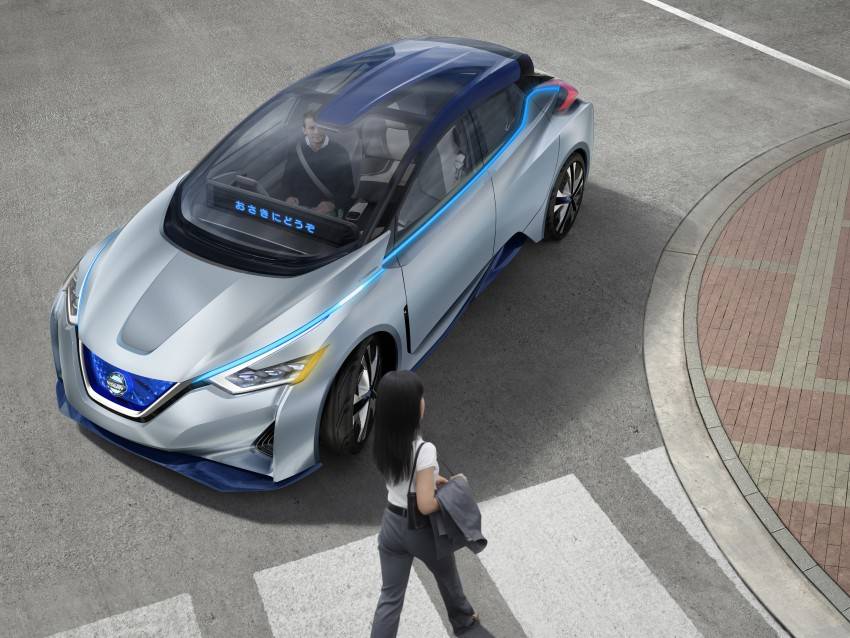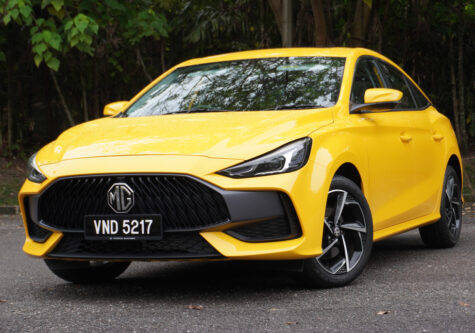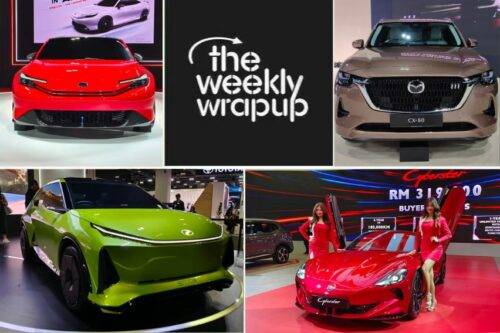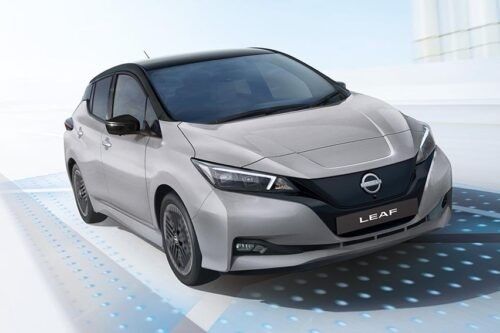Nissan IDS autonomous EV concept revealed at Tokyo 2015
Kuala Lumpur: The Nissan IDS autonomous electric vehicle concept has been unveiled at the 2015 Tokyo Motor Show, showing the Japanese brand’s future design, as well as cutting edge tech we can expect to see on the road in the next five years.
The super sleek IDS Concept hatchback showcases a host of new technologies Nissan is developing in its push to roll out increasingly sophisticated autonomously driving cars by 2020.
Nissan has been chasing autonomous driving since August 2013, when CEO Carlos Ghosn announced plans to have cars with self-driving technologies in multiple vehicles by 2020. Nissan’s push comes as traditional automakers face new high-tech rivals from Silicon Valley that are using their software expertise to develop the advanced electronics needed for the systems.
Nissan IDS Concept is a polite, self-driving EV and it can also communicate with pedestrians to create a friendlier driving environment. When the driver is in Manual Drive, the software analyzes how he or she accelerates from stops and slows for curves and deals with congestion. When it’s the computer’s turn to drive, it remembers those quirks and tries to emulate that driving style.
The company pitches the technology as a safety feature that prevents accidents. But Nissan hasn’t branded safety technology as successfully as such rivals as Toyota or Subaru, said Eric Lyman, vice president of industry insights at TrueCar Inc.
“Nissan is certainly competitive with safety technology, but they don’t seem to have the association with safety that other brands have,” Lyman said. “A branded strategy can be the catalyst for consumers to make the connection of an automaker’s safety initiatives with the shopping process.”
Nissan has equipped the IDS Concept with a 60 kilowatt-hour lithium ion battery that is undergoing road tests and promises to dramatically boost range. The upcoming battery, which executives say is close to being production-ready, doubles the density of the latest 30 kilowatt-hour pack in the Leaf.
Read Also: Proton Iriz EV Vs Nissan Leaf - The Green War
“A prototype vehicle with the 60 kilowatt-hour battery is already running around with a numbered license plate,” said Takao Asami, Nissan Alliance global vice president for research and advanced engineering. “From a technical point of view, the technology is already available. We still have to go through production engineering and product engineering phase.”
Engineers improved on that battery by switching to a manganese, nickel and cobalt chemistry for the cathode, from the current base of manganese-nickel. They also devised a better electrolyte, which improves the battery’s life span.
Read Also: Nissan NP300 Navara on display at 1 Utama Shopping Centre
On the outside, the wedgelike design delivers what Nissan says is an industry-leading drag coefficient of 0.20. Wing-shaped fenders help smooth airflow around the car, while further gains come from a low profile, thin tires and a flat bottom.
Substantial weight loss comes through the use of an all-carbon fiber body. Though prohibitively expensive today, Nissan says falling costs will gradually make carbon fiber a viable choice, especially for EVs where low weight is at a premium.
“We are not ready now, but we are developing this for beyond 2020,” said Yasuhiro Tosaka a body engineer who works on lightweighting in Nissan’s advanced engineering division.
Read Also: Nissan vehicles might face a price hike in Malaysia in 2016
The goal is to bring the cost of carbon fiber down to around 20 euros ($22.03) per kilogram, compared with more than $110 per kilogram today, he said. High-tensile steel, by contrast, costs less than $4 per kilogram, depending on the grade, he said.
Sell your car at the best price
 Verified and genuine buyers
Verified and genuine buyers
Nissan Car Models
Trending & Fresh Updates
- Latest
- Popular
You might also be interested in
- News
- Featured Stories
Nissan Featured Cars
- Latest
- Popular
Latest Nissan Car Videos on Zigwheels








































































